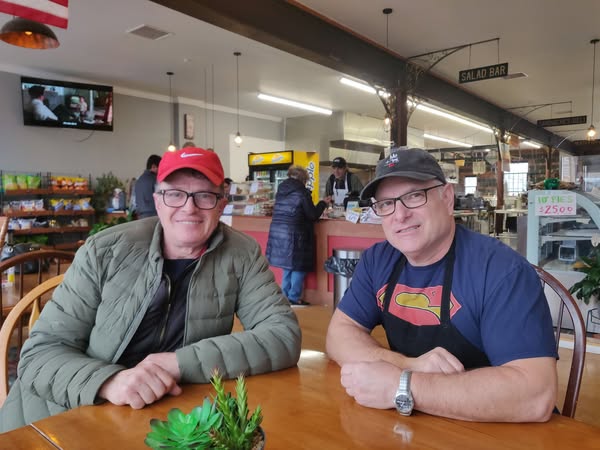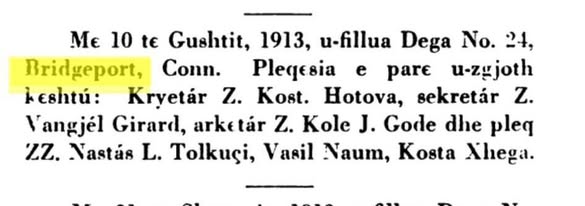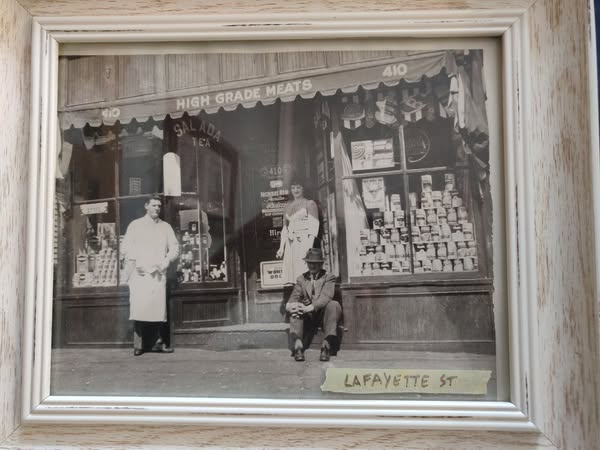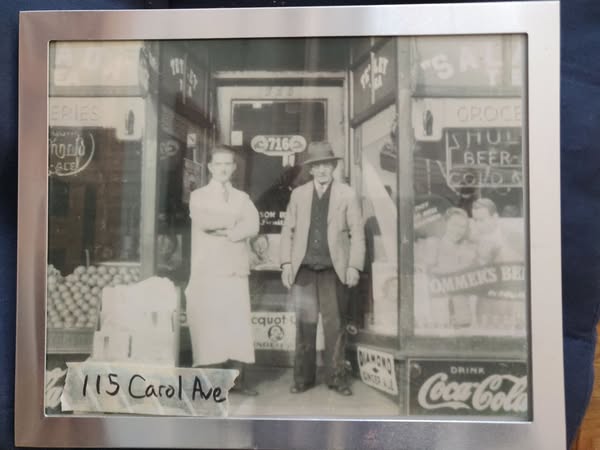

Rafaela Prifti/


Greg Nichio and his siblings are third generation Americans of Albanian descent, who were born and raised in the grocery business largely operated by Albanians in the Bridgeport area in early to mid-1900s. Through time business absorbed and adjusted to the big and small changes of the American economy and society that had its impact on the Albanian community. Today’s Crown Café is a spacious diner style that welcomes locals and visitors, while the framed black and white photos of the family store from the 1940s, old newspaper clippings placed above the book shelf to the right of the entrance tell a story of a vibrant town and driven folk which Greg remembers to this day. Though the current community seem to be rather dispersed in the most populous city of the state of Connecticut, the past of Bridgeport Albanians including its Vatra branch might be inspiring its comeback.
Greg basically started working in the store at the age of 12. Now in their sixties, Greg and his brother have owned and managed The Crown Plaza Café for decades. Their two younger sisters who worked at the store for many years saved money to pursue their own paths. Theirs is a family business in the full meaning of the word. The local ownership started as a warehouse or a wholesale establishment to chain stores and clients. Alongside the wall, there is nostalgic display of iron cast shop equipment, magneto phone, a pre-war sewing machine and other vintage style items. In the back of the kitchen area, there is the Albanian flag. Greg’s brother bought and put it up to honor his heritage, he says. The flag caught the eye of Besim Malota, Vatra’s Treasurer, a longtime Connecticut resident. On a winter day last year, on his route to work, when Besim picked up his cup of coffee as usual, he noticed the flag that was put up and asked Greg “Are you Albanian?” while pointing at the back of the store.
Greg says there are no exact numbers for the Albanian families and children of school age in the Bridgeport area. Going back a century, in 1925 the first church service in Albanian was conducted in a chapel located at Park and Fairfield Avenues. Ten years later the services moved to the Staples Bank Building and then the church organization was formed. It was renamed St. George Albanian Orthodox Church. In 1938 Fan Noli dedicated the new church. From 1929 to 1942, society Ylli was founded, the Ladies Society Teuta was organized, followed by the choir and the Sunday School. Down the street from the Crown Cafe, the Universal church yard is visible. Greg tells us that his grandfather who came from Korce was a big donor of the Albanian church. “He helped built the church and wanted to build a bigger one that had a balcony for the choir, but “Albanians don’t like to spend too much money”, he would say.”
Looking further back, Dega No. 24 Bridgeport Conn. Vatra Branch was organized on August 10, 1913. Besim brings to mind the large Albanian Bridgeport community of the late 1980s before numbers started to dwindle as the grandparents and then the parents passed away followed by the offspring’s moving out of the houses and relocating in the state or even in other parts of the country. Jumping in, Greg says that there are a lot of Albanians who live in Bridgeport now but don’t know one another. “Some of them who work as construction contractors in Stanford come to have breakfast at the Cafe on Sundays.”
The Crown Budget Market, a grocery warehouse was the first Chain Store of its time – “My cousin on my father’s side, Louis Theotis, came here earlier than others, and he was very wealthy. He started a grocery warehouse in Bridgeport with my great grandfather, his name was Atham, Pete Atham. His cousin owned a restaurant in Boston years ago. Albanians did very well for themselves,” recalls Greg. “At some point twelve or fifteen Albanians of my parent’s generation owned the warehouse that supplied over 100 grocery stores in the area. But they were stubborn and didn’t have much trust in each other. One thought the other one would cheat them. That’s what broke them apart. If they only had the trust, we’d bigger than Super Stop and Shop today. Some had little Mom and Pop stores. Some had big stores like my grandfather. He had three big stores like this size. Back in the ’50s, we had a store like this. It took care of the neighborhood. No big chains back then. The Crown Budget Market was the chain store of the time.”
End of part one.
